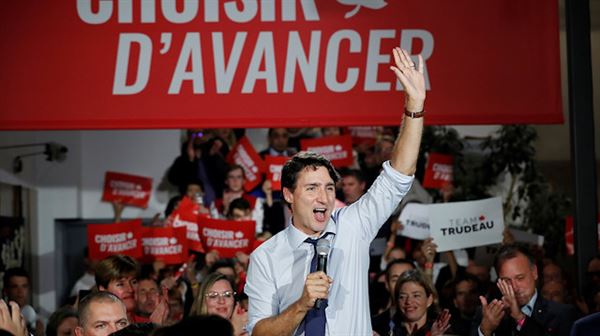Six political parties are vying for the right to govern Canada in federal elections Oct. 21. The top contenders are the Liberals, currently in power u
Six political parties are vying for the right to govern Canada in federal elections Oct. 21.
The top contenders are the Liberals, currently in power under Prime Minister Justin Trudeau who is trying to win a second four-year term, and the Progressive Conservatives led by Andrew Scheer. This is Scheer’s first campaign as leader.
These two parties have dominated Canadian elections since Canada became a self-governing country within the British Empire in 1867. And the Liberals have governed for almost 69 years in the 20th century, the longest of any political party in a developed country.
The four other parties in the race include: the New Democratic Party formed by the merger of two pro-union parties in 1961; the Green Party came into being in 1983; the Bloc Quebecois in 1991; and the People’s Party is running in a federal election for the first time.
The latest polls place the Liberals and Conservatives in a dead heat leading up to Monday’s vote.
This could lead to a minority government, when neither the Liberals nor Conservatives capture 170 seats of 338 in the House of Commons necessary to form a majority government.
NDP leader Jagmeet Singh is in his first campaign and has already said he would be open to form an alliance with the Liberals to stop the Conservatives from power.
The Conservatives are touting to balance the budget, projected to be $16.5 billion in 2019-29. The NDP and Liberals are traveling the opposite road, vowing to spend billions in various ways such as infrastructure.
This marks the 43rd federal election in Canada.
Canada has 10 provinces and three territories that have governments with specific areas of authority, but the overall government is a federal one based in Canada’s capital, Ottawa, and it allocates money to provinces. Canadians vote for individual members of Parliament running in an area called a riding.
There are 338 ridings, hence 338 seats in the House of Commons.
The election is a “first past the post” system, meaning the candidate who receives the most votes in a riding wins a House of Commons seat. Each party leader must run as a candidate in a riding and it is possible for a party to win election but the leader lose.
Since 1929, the voting day is always a Monday, unless that day is a federal or provincial holiday.
